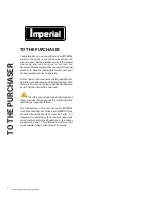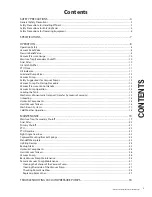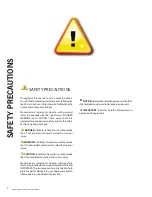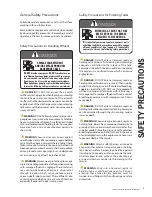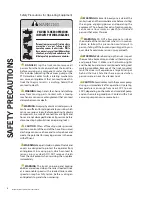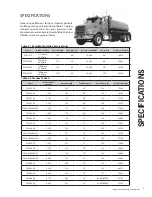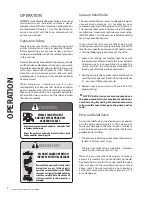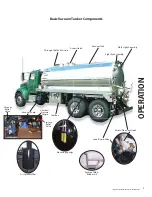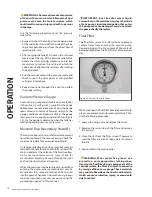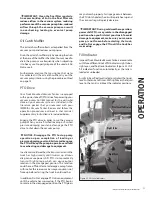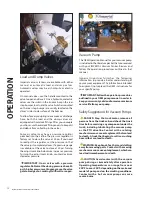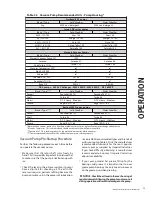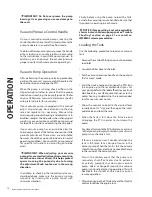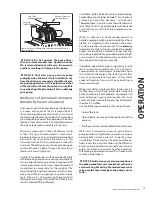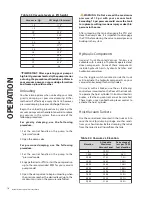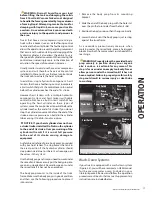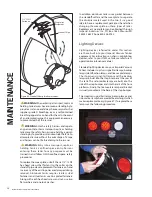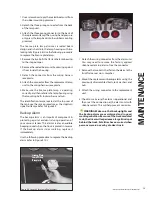
11
IMPERIAL TRUCK MOUNTED VACUUM TANKER MANUAL
may not mesh properly. As slippage occurs between
the PTO clutch plates, the oil will rapidly heat up and
the viscous drag will quickly decrease.
★
IMPORTANT: During cold weather operation,
power shift PTO-s may rotate in the disengaged
position when you first start your truck. To avoid
damage to equipment, make sure your vacuum
pump is not frozen before starting the truck,
and Do Not engage the PTO until the truck has
warmed up.
Fill Indicator
Imperial Truck Mounted Vacuum Tankers are available
with three different kinds of fill indicators: sight tubes,
sight eyes, and float level indicators (Figure .). All
fill indicators function automatically, as the tank is
loaded or unloaded.
A sight tube or float level indicator displays the liquid
level in the tank at all times. With sight eyes, the liquid
level in the tank is visible at the indicator positions.
★
IMPORTANT:
Clean the final filter regularly.
An excess buildup of lint in the final filter can
reduce airflow in the vacuum system, reducing
performance of the vacuum pump. Also, reduced
airflow through the vacuum pump can result
in overheating, leading to eventual pump
damage.
Oil Catch Muffler
The oil catch muffler collects oil expelled from the
vacuum pump and reduces pump noise.
Drain the oil catch muffler daily by opening the drain
at the base of the muffler chamber. You may need to
drain the pump more frequently when subjecting
it to heavy use. Properly dispose of the used oil; Do
Not reuse it.
Furthermore, anytime that you notice that water
has collected in the oil catch muffler, dry out the
vacuum pump interior using the procedure outlined
on page 15.
PTO Drive
Your Truck Mounted Vacuum Tanker is equipped
with a power take off (PTO) drive for powering your
vacuum pump. An OEM manual for the particular
drive on your vacuum system is included in the
literature packet that you received with your
IMPERIAL Vacuum Tanker. Review and follow the
operation procedures outlined in that manual.
Supplementary instructions are included below.
Engage the PTO drive in order to run the vacuum
pump. When you are finished loading or finished
pressure dumping your tank, disengage the PTO
drive to shut down the vacuum pump.
►
NOTICE: Disengage the PTO to stop pump
operation upon completion of loading or
pressure dumping your tank. Failure to disengage
the PTO will keep the pump in operation and lead
to overheating and damage to equipment.
In extremely cold weather, the transmission oil in the
truck has high viscosity until it warms up. Viscous
drag can cause power shift PTO-s to momentarily
transmit high torque, which can cause output
rotation in the disengaged position. This rotation
could have sufficient force to damage a pump frozen
with ice. For this reason, make sure your pump is not
froze up before starting the truck in cold weather.
In addition, Do Not engage PTO driven equipment
until the vehicle has warmed up. If the PTO begins
to rotate in the disengaged position, the PTO gears
OPERA
TION
���������������������
Figure 3.3 Fill Level Indicators
����������
����������


